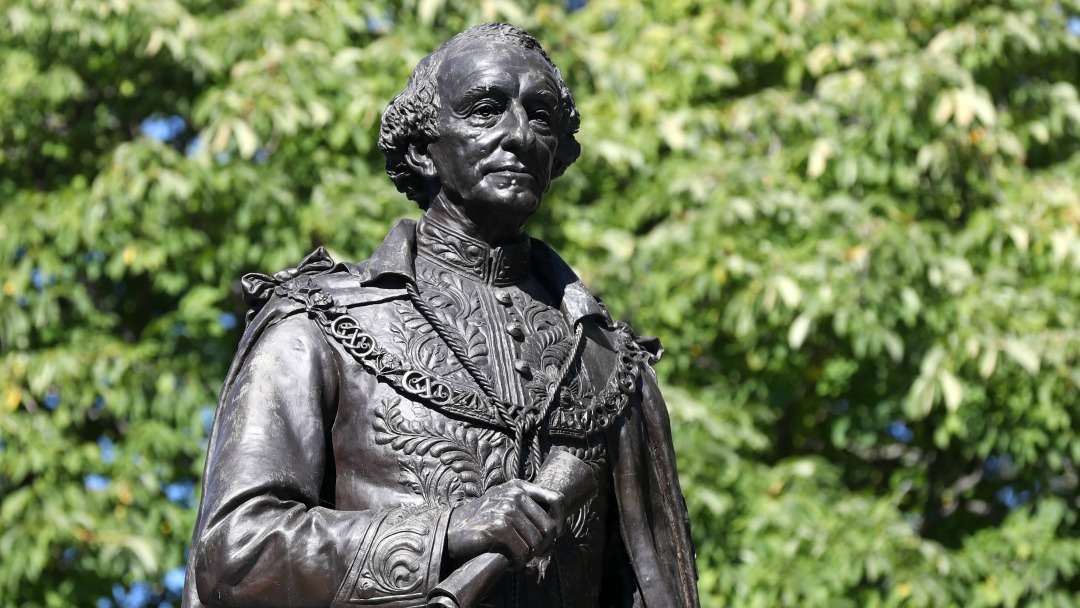What’s in a (re)name?

*
This is a 3-part lesson: research, discussion/presentation; and creation.
Students will research the political implications of a named building, statue or highway, discuss/present their results and conclusions, then propose and defend an alternative name.
There are many reasons for naming buildings, universities and roadways. Often it is to honour someone or something or to commemorate their memory. Choosing a name also has political implications, because selecting one name instead of another signals values and priorities.
John A. Macdonald’s name appears on many buildings, statues, and a highway,
not to mention the bill.

This Canadian icon’s cultural contributions have undergone recent scrutiny and reassessment. The sites of struggle that surround his legacy provides students with wonderful research, discussion and creative opportunities.
Ontario’s elementary teachers’ union passed a motion recommending that Macdonald’s name be removed from schools because his name makes students unreasonably uncomfortable. There is at least one school bearing his name in almost every province.

https://calgaryherald.com/news/local-news/debate-rages-over-call-to-remove-sir-john-a-macdonalds-name-from-schools. Darren Makowichuk/Postmedia
Maslow’s Hierarchy of Needs makes it clear that students who are emotionally upset cannot learn effectively, so there is good reason to take steps to make them feel comfortable at school.
This public debate provides a great opportunity for students to research, access primary texts, read the many sides of the argument, then take action. Macdonald’s contributions (both positive and negative) to Canadian culture are well-documented. Students might research the specific allegations of racism and whether they were hidden or ignored in Macdonald’s lifetime. They might consider why the accusations have re-surfaced at this time rather than during the past 150 years.
Research questions might include:
What is a hero? Can someone be guilty of bad deeds and still considered a hero?
What are Macdonald’s contributions to Canadian society?
What honours have been given to him?
What are the arguments against his glorification?
Who supports his continued glorification? Why?
Who wants his misdeeds publicized and what changes do they want? Why?
What conclusions do you come to? Why?
How might removing his name and statues affect Canadian society?
Might removing his name affect Indigenous people differently than it might affect European descendants? Why?
What influence might the American Charlottesville riots have had on the emergence of this Canadian issue?
Students could present their research and recommendations (i.e., Macdonald’s name should be/should not be removed), explaining and defending their conclusions.
They might also write the content for a plaque to be added to whatever plaque(s) currently exists that describes and explains the debate over the name challenge and their recommendations.
As a creative/research extension, students might research the local indigenous history of the area containing the buildings or statues bearing Macdonald’s name. Based on their findings, they might recommend and defend an alternative name or statue, complete with plaque content explaining why the new name is appropriate and contributes meaningfully to Canadian culture.
The arguments for and against Macdonald’s honours and the suggested new name might be designed, creating an art project. The design might be uploaded to a website and the URL can be posted, possibly as a QR code, at the physical site of the name or statue. That way, others might access and join the debate. If the discussion is posted to a URL, it can be in any format or medium: print, video, audio, interview, documentary, press release, etc.
More extensions:
Students might explore the controversy involving the statue of Cornwallis in Halifax.
Students might research names of schools that derive from Canada’s Indigenous culture, e.g. Tecumseh Sr. P.S., Chief Jacob Bearspaw School and Tom Longboat Jr. PS. They might assess the appropriateness of naming schools after these historic figures and the effects on Canadian society.
(These lesson ideas are adaptable to both elementary secondary school classrooms – ed.)


